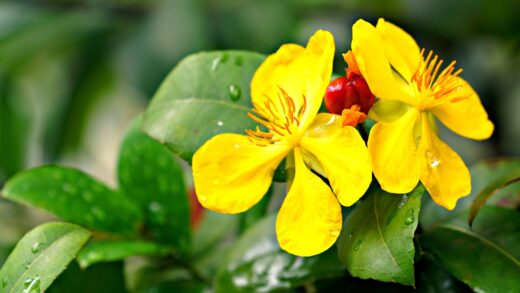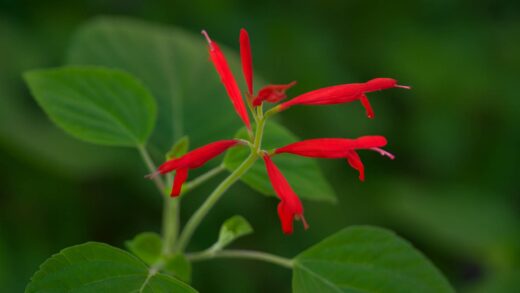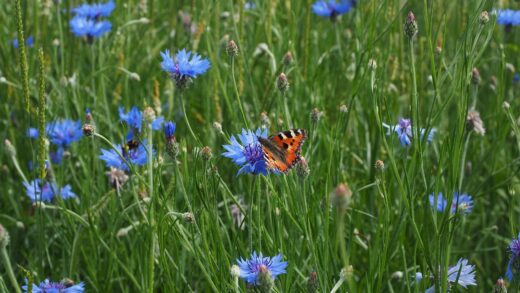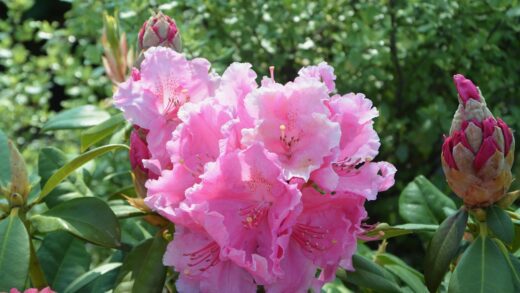Understanding the unique needs of the Burnet Rose, also known as the Scotch Rose, is fundamental to its successful cultivation. This is not a high-maintenance hybrid tea rose that demands constant attention; rather, it is a resilient and hardy species that thrives on a more natural, less intensive care regimen. Its inherent toughness, developed over centuries in harsh, coastal environments, means it is well-adapted to conditions that would challenge other roses. Therefore, your primary goal in caring for this plant is to replicate these preferred conditions, focusing on excellent drainage, ample sunlight, and good air circulation to prevent common issues. Proper care ensures not only a healthy shrub but also a spectacular display of its characteristic single, creamy-white or pink flowers and distinctive black hips.
The foundation of successful Burnet Rose care lies in selecting the right location from the very beginning, as this will significantly reduce future maintenance efforts. This species has a strong preference for open, sunny sites where it can receive at least six hours of direct sunlight per day. A sun-drenched position encourages prolific flowering and helps to keep the foliage dry, which is a key factor in preventing fungal diseases. Furthermore, consider the plant’s mature size and suckering habit when choosing a spot; give it ample space to spread naturally without encroaching on other plants or pathways. Crowding can lead to poor air circulation, creating a humid microclimate that is a breeding ground for pests and diseases.
Soil composition is another critical aspect of long-term care for the Burnet Rose. Unlike many garden plants that demand rich, loamy soil, this rose is exceptionally tolerant of poor, sandy, or gravelly soils. In fact, overly fertile soil can lead to excessive, weak growth that is more susceptible to damage and disease, while producing fewer flowers. The most crucial soil requirement is excellent drainage, as the Burnet Rose is intolerant of waterlogged conditions, which can quickly lead to root rot. If you are working with heavy clay soil, it is essential to amend it with generous amounts of grit, sand, and organic matter like compost to improve its structure and porosity.
Ongoing maintenance throughout the growing season is relatively straightforward but should not be completely neglected. While highly drought-tolerant once established, young plants will require regular watering during their first year to develop a strong root system. A deep layer of organic mulch, such as bark chips or well-rotted compost, applied around the base of the plant can help conserve soil moisture, suppress weeds, and regulate soil temperature. Be sure to keep the mulch a few inches away from the main stems to prevent moisture from accumulating against the wood, which could encourage rot.
Site selection and soil preparation
Choosing the ideal location is the single most important decision you will make for the long-term health and vigour of your Burnet Rose. This rose is a sun-loving plant, and its performance is directly correlated with the amount of light it receives. An open, unshaded position that benefits from full sun for the majority of the day is perfect. This not only fuels the energy needed for abundant blooming but also plays a vital role in disease prevention. Morning sun is particularly beneficial as it quickly dries dew from the leaves, reducing the likelihood of fungal pathogens like black spot and powdery mildew taking hold.
More articles on this topic
Beyond sunlight, consider the physical space the shrub will occupy. Rosa spinosissima is known for its tendency to form thickets through suckering, a natural growth habit where new shoots arise from the root system. This can be a desirable trait if you wish to create a dense, impenetrable hedge, but it requires planning. Ensure there is enough lateral space for the plant to expand without becoming a nuisance. Planting it too close to buildings, walkways, or other delicate plants can create a future maintenance headache as you will constantly need to remove the suckers.
The soil itself should be prepared with the rose’s natural habitat in mind. These roses are native to coastal dunes and sandy heaths, environments characterized by poor, free-draining soils. Therefore, you should aim to replicate these conditions rather than providing a rich, heavily amended garden bed. If your garden has heavy clay or compacted soil, significant amendment is necessary. Incorporating coarse sand, horticultural grit, and a moderate amount of organic compost will drastically improve drainage and create the airy root environment that this species needs to thrive.
Testing your soil’s pH before planting is a wise step, although the Burnet Rose is quite adaptable. It generally prefers a slightly acidic to neutral pH, somewhere in the range of 6.0 to 7.0. However, it is known to tolerate slightly alkaline conditions as well, making it a versatile choice for many gardens. If your soil is extremely acidic or alkaline, you can make adjustments over time using lime to raise the pH or sulfur to lower it. Ultimately, however, good drainage and structure are far more critical to its success than a precisely calibrated pH level.
Watering and mulching strategies
Proper watering is crucial, especially during the establishment phase of the Burnet Rose. For the first full growing season after planting, the rose needs consistent moisture to encourage the development of a deep and extensive root system. This means providing a thorough soaking once or twice a week, depending on rainfall and temperature. The goal is to water deeply to encourage roots to grow downwards in search of moisture, rather than watering lightly and frequently, which promotes a shallow root system that is more vulnerable to drought. Always check the soil moisture a few inches down before watering; if it feels damp, you can wait a little longer.
More articles on this topic
Once the Burnet Rose is well-established, typically after its first year, it becomes remarkably drought-tolerant. Its robust root system, adapted to seeking out moisture in sandy soils, allows it to withstand extended dry periods with minimal intervention. In most temperate climates, mature plants will require little to no supplemental watering, relying solely on natural rainfall. However, during periods of extreme, prolonged drought or exceptional heat, an occasional deep watering will be beneficial to reduce stress on the plant and ensure it remains healthy and continues to produce flowers and hips.
Mulching is a highly recommended practice that offers multiple benefits for the Burnet Rose. Applying a two to three-inch layer of organic mulch, such as wood chips, shredded bark, or leaf mould, around the base of the plant is incredibly effective. This layer helps to suppress the growth of competitive weeds, which can rob the rose of moisture and nutrients. Furthermore, the mulch acts as an insulating blanket, keeping the soil cooler in the summer and warmer in the winter, protecting the roots from extreme temperature fluctuations.
As the organic mulch slowly decomposes, it will gradually release valuable nutrients into the soil, contributing to the overall health of the plant in a slow and sustainable way. When applying mulch, it is important to leave a small, mulch-free circle directly around the base of the stems. Piling mulch up against the canes can trap moisture against the bark, creating an ideal environment for fungal diseases and potentially causing the stems to rot. This simple precaution ensures good air circulation around the crown of the plant.
Pruning and training approaches
Pruning the Burnet Rose is a task that should be approached with a light touch, as this species does not respond well to the hard pruning often required by modern hybrid roses. The primary goal of pruning is to maintain the plant’s natural shape, improve air circulation, and remove any dead, damaged, or diseased wood. The best time to perform this task is in late winter or early spring, just before the new growth begins to emerge. This timing allows you to clearly see the plant’s structure and make informed cuts without damaging the emerging buds.
When making your cuts, always start by identifying and removing any wood that is clearly dead, which will be dry, brittle, and often a different colour from the healthy, green canes. Next, look for any canes that are rubbing against each other, as this can create wounds that provide an entry point for diseases. In such cases, remove the weaker or less well-placed of the two canes. You can also thin out the centre of the shrub slightly if it has become overly congested, which will improve light penetration and air movement through the plant.
Unlike many other roses, the Burnet Rose flowers on old wood, meaning the buds for the current season’s flowers were formed during the previous year. Therefore, excessive pruning will significantly reduce the number of blooms you get. The main structural pruning should focus on maintaining a healthy framework of canes of various ages. A good rule of thumb is to remove about one-quarter to one-third of the oldest, least productive canes each year, cutting them back to the base. This encourages the plant to produce new, vigorous shoots from the ground, continually renewing the shrub.
Training is generally not necessary for the Burnet Rose, as its natural form is a dense, suckering shrub. It is not a climbing rose and does not require support structures like trellises or arbors. The best approach is to embrace its wild, naturalistic habit. If you are using it as a hedge, you can lightly shear it after flowering to maintain a more uniform shape, but be aware that this will sacrifice the development of its attractive black hips, which are a key ornamental feature in the autumn and winter.
Managing pests and diseases
One of the most appealing characteristics of the Burnet Rose is its exceptional resistance to many of the common pests and diseases that plague other types of roses. Its tough, leathery leaves and hardy nature make it a less attractive target for insects and fungal pathogens. However, no plant is completely immune, and under certain conditions, you may encounter some issues. The best defence is always prevention, which starts with providing the right growing conditions: full sun, excellent drainage, and good air circulation are paramount.
The most likely disease to affect a Burnet Rose is black spot, especially in regions with high humidity or during particularly wet seasons. This fungal disease manifests as dark, circular spots with fringed edges on the leaves, which may then turn yellow and drop prematurely. To manage black spot, ensure there is adequate spacing between plants to promote air movement. It is also beneficial to water at the base of the plant, avoiding wetting the foliage. If an infection does occur, promptly remove and destroy any affected leaves to prevent the spores from spreading.
Powdery mildew is another fungal issue that can occasionally appear, presenting as a white, dusty coating on the leaves, stems, and buds. It is most common in warm, dry weather with cool, humid nights. As with black spot, improving air circulation is a key preventative measure. If you see signs of powdery mildew, you can often manage minor outbreaks by simply washing the foliage with a strong spray of water in the morning, which helps to dislodge the fungal spores. For more persistent issues, horticultural oils or sulfur-based fungicides can be effective.
Pests are generally a minor concern for the Burnet Rose. Aphids may occasionally colonize the new, soft growth in the spring, but they can usually be controlled by a strong jet of water from a hose or by encouraging natural predators like ladybugs and lacewings into your garden. Sawfly larvae can sometimes cause damage by skeletonizing the leaves, but significant infestations are rare. A healthy, vigorous plant is much less likely to succumb to pest and disease pressures, so focusing on providing optimal growing conditions is your most effective management strategy.
Seasonal care considerations
The care required for a Burnet Rose varies throughout the year, following the natural cycles of growth, flowering, and dormancy. In spring, your focus should be on recovery from winter and preparation for the new growing season. This is the ideal time to perform any necessary pruning, removing dead or damaged wood and lightly shaping the plant. Once the danger of hard frost has passed, you can also apply a balanced, slow-release fertilizer if your soil is particularly poor, although in most cases, this is not necessary. It is also a good time to apply a fresh layer of mulch to help conserve moisture as the weather warms.
Summer is the period of peak performance for the Burnet Rose, and it generally requires minimal intervention. Your main task will be to monitor soil moisture, especially for young plants or during prolonged dry spells, providing deep watering when necessary. Enjoy the profusion of fragrant flowers, but resist the urge to deadhead them after they fade. Allowing the flowers to finish their cycle is essential for the development of the large, spherical, black hips that provide significant ornamental interest in the latter half of the year. Keep an eye out for any signs of pests or diseases and address them promptly.
As autumn arrives, the focus of your care shifts towards preparing the plant for the coming winter. The hips will ripen to a deep purplish-black, providing a striking contrast against the foliage, which often turns beautiful shades of yellow, orange, and red. This is a good time to do a final clean-up around the base of the plant, removing any fallen leaves that could harbour fungal spores over the winter. Refrain from any major pruning at this time, as it can stimulate new growth that will be vulnerable to frost damage.
Winter care for the Burnet Rose is incredibly simple due to its exceptional hardiness. This species is fully capable of withstanding cold temperatures without any special protection in most climates. You should avoid applying fertilizer late in the season, as this can encourage tender new growth that will not have time to harden off before the first frosts. The persistent black hips provide valuable food for birds and other wildlife during the lean winter months, as well as adding structural interest to the dormant garden landscape. Simply allow the plant to rest and gather strength for the spring ahead.
📷No machine-readable author provided. Svdmolen assumed (based on copyright claims)., CC BY-SA 3.0, via Wikimedia Commons


















